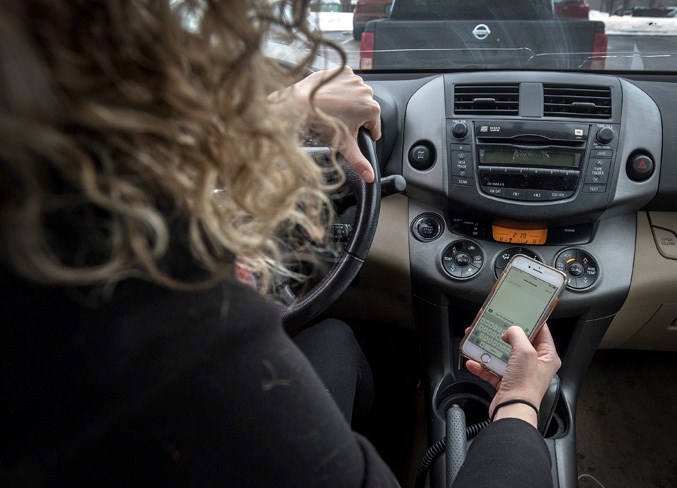Motorists on St. Albert streets faced fewer distracted driving convictions in 2023 than their Edmonton counterparts, according to data from the province.
Last year St. Albert saw 148 distracted driving convictions to Edmonton’s 3,256 convictions. Per capita, Edmonton’s conviction rate was 16 per cent higher than St. Albert’s.
In 2022 the gap was even wider, with 95 convictions in St. Albert versus 4,091 in Edmonton, making Edmonton’s conviction rate more than three times higher than St. Albert’s rate.
The disparity isn’t due to different enforcement approaches, according to Curtis Harsulla, St. Albert RCMP’s unit commander for traffic services.
In fact, St. Albert RCMP and Edmonton police do joint operations to catch distracted drivers, speeders and impaired drivers.
“It could simply be based upon enforcement hours,” Harsulla said. “[Edmonton] has a dedicated unit that just does traffic enforcement. They’ve got bodies designated to just do speeding, cellphones, seatbelts.”
Edmonton also has designated enforcement units for traffic collisions and impaired driving, whereas St. Albert has only one unit that oversees all traffic violations in the city, Harsulla said.
More resources would improve enforcement, he said. “But we’re dealing with what we have right now, and shortages are everywhere. We’re doing the best we can.”
St. Albert RCMP use the same tactics as Edmonton police to catch distracted drivers. These include traffic blitzes, covert spotter operations and roving patrols.
But Edmonton appears to be an outlier in the province for its high conviction rate. Calgary, for example, had only 1,528 convictions in 2023, three times fewer than Edmonton.
The data shows that from 2019 to 2023, distracted driving convictions in St. Albert trended downward. They reached their peak in 2020 with 404 convictions, but they haven’t surpassed the 150 mark since then.
Harsulla thinks that Albertans’ attitudes towards distracted driving are playing a big role in the decline. Awareness and educational campaigns may have finally conveyed to motorists that distracted driving can be just as dangerous as impaired driving, he said.
“They changed it a couple years back to add demerits,” he said. “That changed the game as well because now it has implications for your insurance … So society’s taking it more and more seriously.”
A problem Harsulla has seen with greater frequency in recent months is motorists not understanding the law when it comes to distracted driving.
“When we pull them over, they’re like, ‘Oh I was just changing a song, or I was just putting in an address,” he said.
“You don’t have to be on the phone or texting. The law says it’s illegal to handle — to manipulate or use an electronic communication device … So just touching it, period, is reason enough to get pulled over.”
Many drivers think that by using speakerphone they can avoid a distracted driving penalty, he said. This is not the case.
Bluetooth, he said, “is the biggest saviour for distracted driving.”
“Errors in judgment while driving, be it while impaired or distracted, can result in the same thing,” he said. “That’s serious bodily injury or death.”




